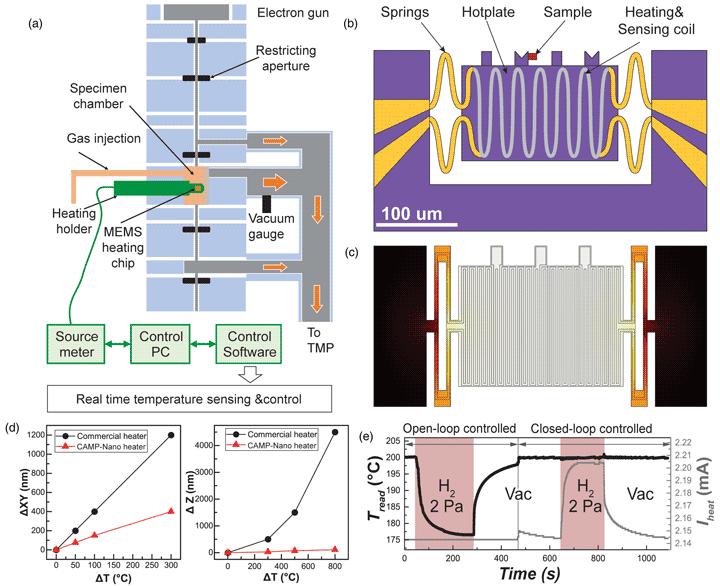Published online by Cambridge University Press: 21 May 2021

Accurate control and measurement of real-time sample temperature are critical for the understanding and interpretation of the experimental results from in situ heating experiments inside environmental transmission electron microscope (ETEM). However, quantifying the real-time sample temperature remains a challenging task for commercial in situ TEM heating devices, especially under gas conditions. In this work, we developed a home-made micro-electrical-mechanical-system (MEMS) heater with unprecedented small temperature gradient and thermal drift, which not only enables the temperature evolution caused by gas injection to be measured in real-time but also makes the key heat dissipation path easier to model to theoretically understand and predict the temperature decrease. A new parameter termed as “gas cooling ability (H)”, determined purely by the physical properties of the gas, can be used to compare and predict the gas-induced temperature decrease by different gases. Our findings can act as a reference for predicting the real temperature for in situ heating experiments without closed-loop temperature sensing capabilities in the gas environment, as well as all gas-related heating systems.